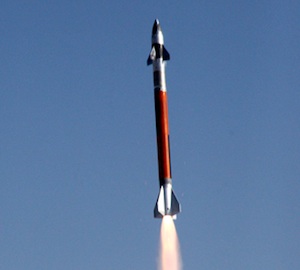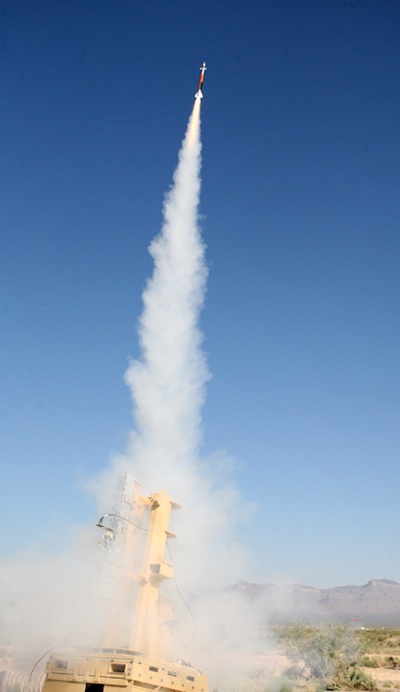

On March 22, 2013 Lockheed Martin completed the first successful flight test of the Miniature Hit-To-Kill missile, part of the Extended Area Protection and Survivability (EAPS) systems. The flight provided data about the weapon’s seeker, guidance, navigation and control system performance. This very small and agile interceptor is designed to defeat Rocket, Artillery and Mortar (RAM) targets at ranges greatly exceeding those of current systems. This test is another milestone in a series of technically challenging events completed under the EAPS Integrated Demonstration Science and Technology program.
The test closely replicated a tactical situation in which an enemy launches a mortar at an area protected by the MHTK intercept system. A radar successfully detected and tracked the threat in flight. The tactically configured MHTK interceptor launched vertically and flew a trajectory positioning it to detect energy from a ground illuminator reflected off the mortar target. Responding to the reflected energy, the MHTK interceptor maneuvered to fly very close to the target and gather data through its seeker as it passed the mortar in flight. Intercepting the target was not an objective of this flight test. In addition to gathering data to characterize the interceptor’s performance, this test integrated and exercised the entire intercept system for the first time. The data collected will support an intercept flight test planned for later this year.

At less than 1 meter long, less than 50 millimeters in diameter and less than 3 kilograms mass at launch, the MHTK is extremely compact and very agile in flight. Paired with a fire control sensor capable of providing illumination, the MHTK provides robust defeat of RAM targets through body-to-body impact at tactically significant ranges, greatly increasing the protected volume in which our soldiers operate and offering commanders more flexibility than legacy and interim systems.
The test was conducted at White Sands Missile Range, N.M., in collaboration with the U.S. Army Research Development & Engineering Command/Aviation Missile Research Development & Engineering Center (RDECOM/AMRDEC). “We are very pleased with the initial review of the test data” Loretta Painter, AMRDEC EAPS Program Director said, noting the collected data will be used to reduce risks and improve the system prior to the next flight.
The Lockheed Martin MHTK interceptor is on track to meet the AMRDEC Average Unit Production Cost goal of $16,000 per interceptor in 2006 dollars at specified quantities, making it much more affordable than systems such as the counter-rocket ‘Centurion’ gun it will replace.



















